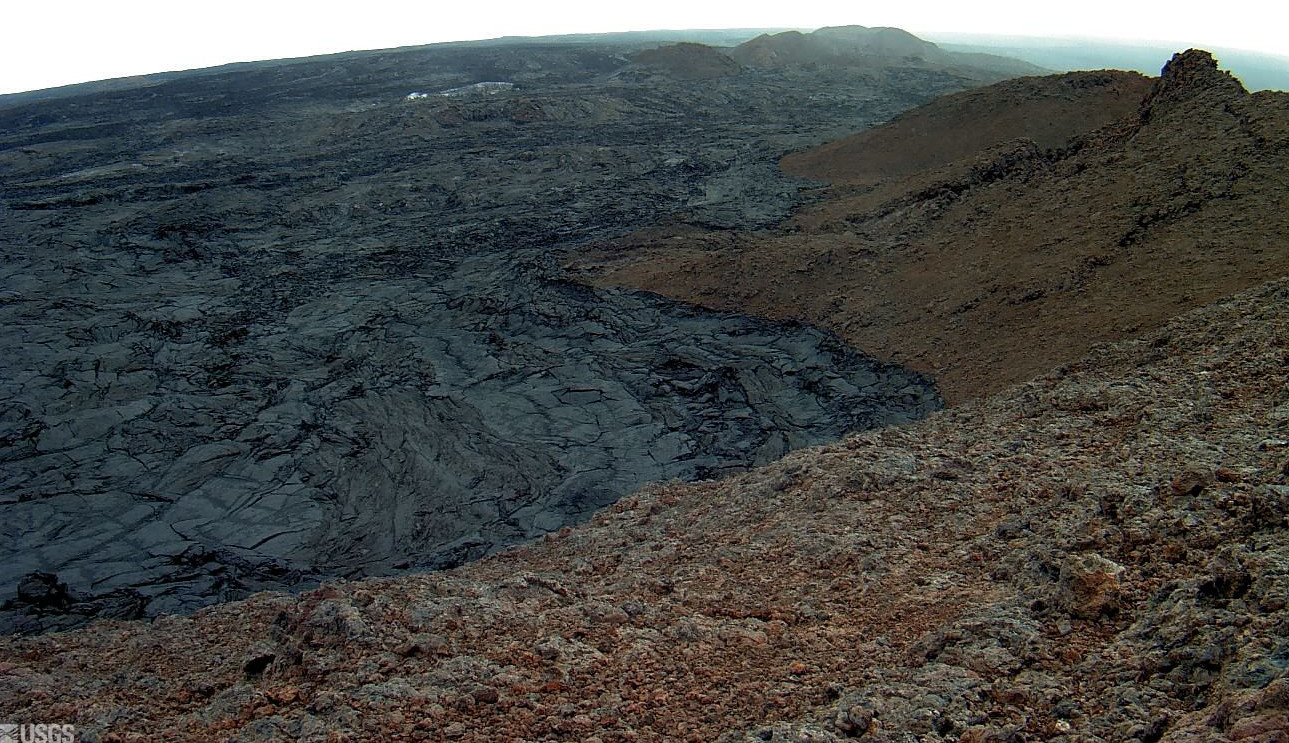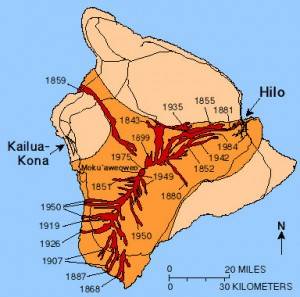

The image, which is called a radar interferogram, compares two separate 'snapshots' acquired at distinct points in time. While the precision may be less than some other deformation techniques (i.e., GPS monitoring or tilt measurements), the broad coverage can pinpoint particularly interesting patterns and help define areas for collateral studies, including further modeling of the causes of deformation (see next section). Measurements of the component of deformation along the instrument's line-of-sight typically have centimeter-scale precision. The technique's spatial coverage is variable from hundreds of square meters to hundreds of square kilometers. A technique has emerged that enables scientists to create an image of where and how much displacement occurred over a ground or glacial (ice) surface (e.g., Rosen and others, 2000). The images were produced from data acquired by the European Space Agency's Environmental Satellite (ENVISAT), with an incidence angle of 25° from the ground, looking W to E. As depicted in the scale bar (bottom center), concentric and cyclical sets of fringes indicate a ground movement of 2.83 cm towards the satellite's line-of-sight during the time interval shown in each image. The large number of color bands ('fringes') in (a) indicates an increased rate of inflation compared to the fewer number of fringes in (b). These interferograms highlight the slowing of inflation during the latter interval. Radar interferograms of Mauna Loa covering the time intervals of (a) 11 October 2003-19 November 2005 and (b) 24 March 2007-17 April 2010. To better understand the technique used to observe the slowed rate of deformation at Mauna Loa, see the next section.įigure 24. Comparison of radar interferograms covering two intervals (11 October 2003-19 November 2005 and 24 March 2007-17 April 2010) highlights the slowed deformation rates during the latter interval (figure 24). Increased rates of inflation following the April-October 2004 deep LP earthquake swarm continued through 2007, when HVO reported that GPS and InSAR-based inflation rates had slowed substantially.

A subsection below discusses the use of deformation data as a basis for modeling inferred magma bodies in the subsurface at Mauna Loa (Amelung and others, 2007). The material in this report is drawn from monitoring data collected by the USGS Hawaiian Volcano Observatory (HVO) and, in particular, Interferometric Synthetic Aperture Radar (InSAR) data provided by HVO's Mike Poland. During 2004-2010, HVO reported little variation in gas emissions at Mauna Loa. After that and through 2010, deformation continued at variable rates and with brief pauses. We previously reported on an April-October 2004, deep, long-period (LP) earthquake swarm and associated brief period of contraction ( BGVN 29:09). Mauna Loa has remained non-eruptive since April 1984. 2004-2010 deformation trends intrusive bodies modeled


 0 kommentar(er)
0 kommentar(er)
